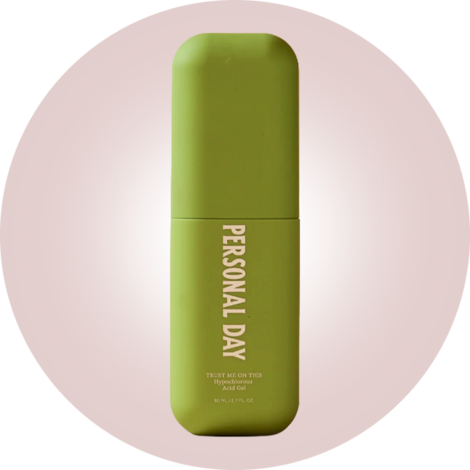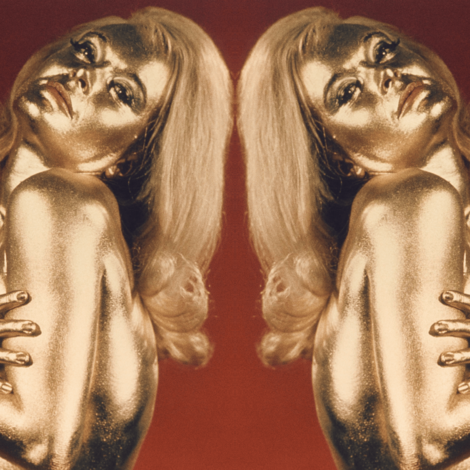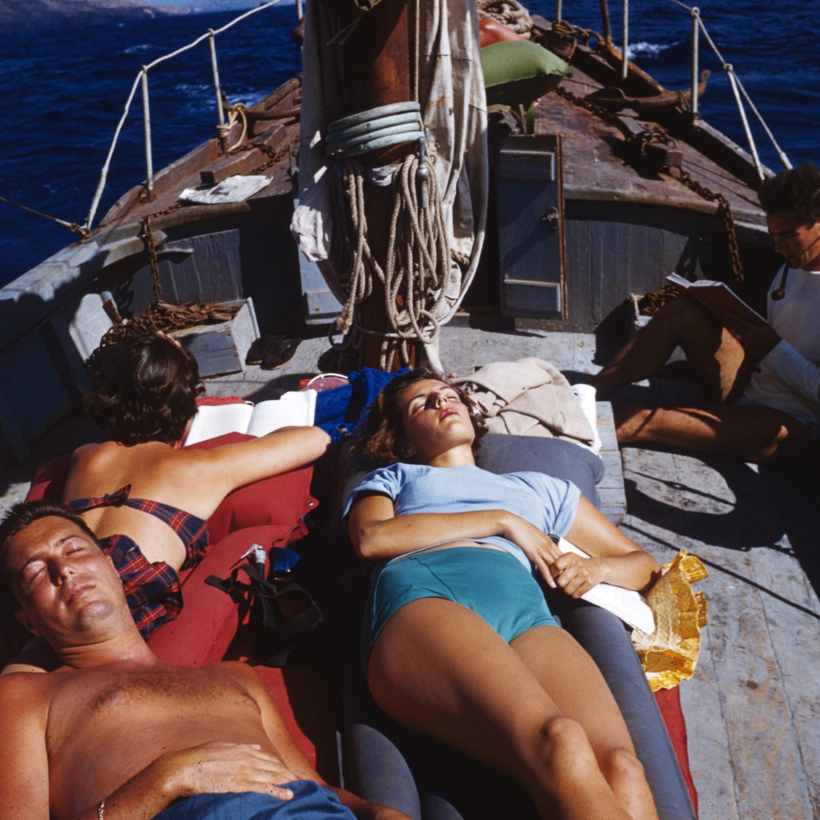There I was, at the best hotel in the world, desperately hungover.
I’m not just throwing search engine–optimized terms around. Passalacqua is the best hotel in the world, according to a recent list published by the U.K.-based “50 Best” organization famous for its annual restaurant ranking. Passalacqua is a grand palazzo behind an even grander villa, whose front yard descends in a series of terraces—upon which sprout a fruit garden, a vegetable garden, an Italian garden, a rose garden, an olive grove, a fitness center whose windows open out to the olive grove, a tennis court, a pool, an outdoor cinema, and another villa—which will eventually arrive at the shore of Lake Como, its white-tipped waves bobbing in the wind.
“The white horses of Lake Como!,” somebody in the car announced as the shuttle climbed hotelward—couldn’t say who it was because I was keeping my eyes too shut to notice! It had taken one train, two Sprinter vans, six hours, and countless loops of traffic circles, but I was determined not to throw up for a fourth time. It was also my first trip to Italy.
For the record, I was on assignment to discover, and then write about, a particular brand of European indulgence that you can say with me now once and for all: la dolce vita, Italian for “the sweet life.” Europe is the most visited continent in the world, and we are visiting more of its countries than ever, with the U.N.’s World Tourism Barometer forecasting a complete rebound from the pandemic—2 percent growth over 2019’s figures—this year. From the perspective of a lay American, the European tourism market can appear like a very large and gorgeous food hall, and the time that can be spent visiting its many stalls is usually an equation involving personal means and capacity for preparation divided by willingness to undergo discomfort, and then you have to add number of vacation days.
I had always wanted to go to Italy but decided to wait until a work trip or wedding invitation, and the work trip came first. I plugged in the numbers and got three nights. I have two regrets about my time in Italy, and the short duration was my first—I should have taken the rest of the week off.

Also for the record, I have no problem pursuing pleasure. And yet I have noticed a preference to maintain a certain control that is hard to surrender. I love to drink and not get drunk; I love to leave a party early, still more annoyingly, make sure everybody at the party knows in advance that I am planning to stay a certain amount of time, and when that time is up, evanesce into nothingness after saying good-bye to everyone and his dog.
I need pleasure to live, and I need guilt to live, too, but I’ve understood that a large part of my overall mood is keeping those values in tight proportion. When they’re out of whack, my mental health starts to wither, to say nothing of my physical body.
There are few better places to suffer than in the lap of complete and total luxury, and though a better place may arguably be within the privacy and the dignity of your own home, the best is, once again, Passalacqua, which was crafted with elements of both. Twenty-two rooms ensure that the ratio between square footage and encounterable other guests remains tranquilly low, but there is something else in the air there: the sweet sense, even fleeting, of proprietorship; that you live here, and everyone else is merely visiting. Here you are, with your guests enjoying themselves in your many gardens. Even bed rotting feels glamorous when you’re the master of the house.
Only you are not, technically speaking, although the true owner would love for you to feel that way. The hotel takes its name from the family who owned it the longest. It was Count Andrea Lucini-Passalacqua who expanded a property once owned by Pope Innocent XI; the main villa was built in 1787, stayed in the family until 1890, was inhabited variously throughout the 20th century, and brought back to life in 2022 by the Como native Valentina De Santis, a hotelier, and her parents, who run the nearby Grand Hotel Tremezzo. “We want you to feel like you’re living in the 18th century,” she told me.
De Santis is visibly fabulous. She is also funny and prone to understatement; at dinner, and after being pressed for details of her life outside the hotel, she confessed to enjoying photography, “but I don’t have a good eye.” O.K.—De Santis also hand-selected every interior detail throughout the palazzo grounds: the fabric for every embroidered cocktail menu, the custom-made Bottega Conticelli trunks from which rise flat-screen TVs at the foot of every bed. It was she who decided to forgo curtains for the two stories of casement windows in the grand foyer, fitting each with a Murano-glass chandelier instead.

The taste is rich. Passalacqua’s average nightly room rate hovers around $1,500, but it could be more or less depending on the season, or if said room is the one where Vincenzo Bellini—the composer and Lothario—lived his own sweet life. Those who have slept there form a rarefied group: Winston Churchill once spent a night at Villa Lucini, as did Napoleon, whose portrait hangs along the walk from the barroom to the formal restaurant, which doesn’t have a name—just “like a restaurant in your own home” might not be named, one porter cheerfully explained. Recent fans of the hotel include those, like Martha Stewart, who understand the fine art of homemade decadence.
There is, however, one place that’s off limits, even to you, even at your home. Beneath Passalacqua stretches a tunnel network that runs from the top of the property all the way down to the white horses, used for food storage, for World War II shelters, for lovers. Now the cellars house some of Passalacqua’s spa facilities, including an ice shower and heated pool. Mint teas and infused waters are everywhere; you drink them both, because you desperately need them.
The best hotel in the world has a fabulous spa. Moroccan lanterns float in the apses of a relaxation room, guarded by columns thick like redwoods. The spa attendant explained, “This room used to be a, how do you say … ” She searched for a word I thought might be hammam or bathhouse. “Cow- and horse-storing place?” The treatment rooms, paneled in airy mosharabi latticework, evoke being inside a lantern itself and bringing about a realization that, by massage’s end, that you were the source of light all along.
Meanwhile, in Tuscany …
Fabulous spa. But the best spa in the world lies to the south by about one train, two Sprinter vans, six hours, and countless loops of traffic circles, in the Tuscan countryside. It was there, not half a day prior, that I may have overindulged myself.
Borgo Santo Pietro, an estate set beside a small village in greater Siena, was once a stop for medieval pilgrims seeking road refuge. In the 21st century, Jeanette and Claus Thottrup purchased the property with the dream of turning it into a private residence that was quickly outstripped by a vision for a boutique hotel. After seven years of construction, the Borgo opened in 2008, and it has returned to its original use case as a stopping place for a new generation of pilgrims, less weary than wealthy. Its 24 rooms are spread throughout an immaculate campus, each one a perfect Tuscan country dollhouse. The Borgo’s spa sits just off the main drag, on a path lined with cherry trees. “They only bloom here for four, five days,” Jeanette told me. “They bloomed just for you!”
Thottrup shared how a struggle to get pregnant led her to research various forms of healing. A former fashion designer, she began to cultivate a study of herbal medicine while working with Neal’s Yard Remedies in the U.K. Now her herb garden, which abuts a chicken range and a few rolling acres of farm, is one of her greatest achievements. (The other is her son, who graduates from high school this spring.) After the Thottrups built a cooking school on the Borgo, where guests could take classes with access to its vegetable garden, she began using the kitchen to cook up herbal serums and creams. The idea was simple enough, but the execution has created something quite unique in high-quality skin care: a collection whose supplying farm, laboratory, central distribution center, and luxury flagship spa are all located within a few tree-lined streets.

I was in the massage room when I began to lose it. The Borgo spa offers something called a candle massage, which sounds more erotic than it is, but only slightly. The name refers to a Seed to Skin Tuscany balm planted with a wick that burns into a warm, dry oil. Fluffy pink cherry blossoms had been collected and placed beneath the face rest; by the end of the treatment, a few were dewed with drool. My grip on control, now oil-slick, had loosened but not quite released.
I was in Saporium, the Borgo’s fine-dining restaurant, when I really began to lose it. In view of the setting Tuscan sun, I dined on sliced vegetables that had been picked that morning; I tasted mullet, a fish that is abundant in Italian nature but uncommon on Michelin-starred menus because of the herculean effort required to remove its hundreds of bones, so that it melts in the mouth like warm butter. I drank more wine in one sitting than I had in a decade; I felt invincible, and I was certainly drunk. For my nightcap, I ordered a gin martini and a hot bath.
Across the patio, laughter spilled out into the night. I felt sure that this was the dolce vita I had been looking for, and I ordered another gin martini. But it wasn’t until I returned to my own casita that I found it, and it nearly brought me to tears.
In my limestone bathtub, a garden bloomed. Over the surface of the water lay a blanket of wildflower petals, their aroma rising with the steam. I lowered my body into the tub and stayed for more than an hour, examining every petal, turning it between my fingers. The water itself—blessed, according to Seed to Skin Tuscany, by the oil of 1,000 pressed flowers— seemed to wrap my skin in a film of moisture.
And it was probably there, martini in hand, where I sowed the seeds for my undoing. Some five hours later, I’d begin the morning of my drive to Lake Como with my head in the toilet. How could I have known? My mind would spend the next day replaying all of the decadent choices I had made the previous day like surveillance footage. Each glass of wine consumed, each glass of water missed. I can say, with only a bit of recency bias, that it was one of the worst hangovers of my life, and yet I can also say with every bit of certainty that it had to happen, because forgoing any other point of the evening may have led me to a place other than a bathtub full of flowers. It’s almost embarrassing to admit how good it felt. My only other regret was leaving it.
Rooms at Passalacqua begin at $1,630 per night, and rooms at Borgo Santo Pietro begin at $950 per night. The writer was a guest of the hotels
Brennan Kilbane is a New York–based writer. He is originally from Cleveland, and his interviews and essays have appeared in GQ, New York magazine, and Allure, where he was recently on staff as a features writer





